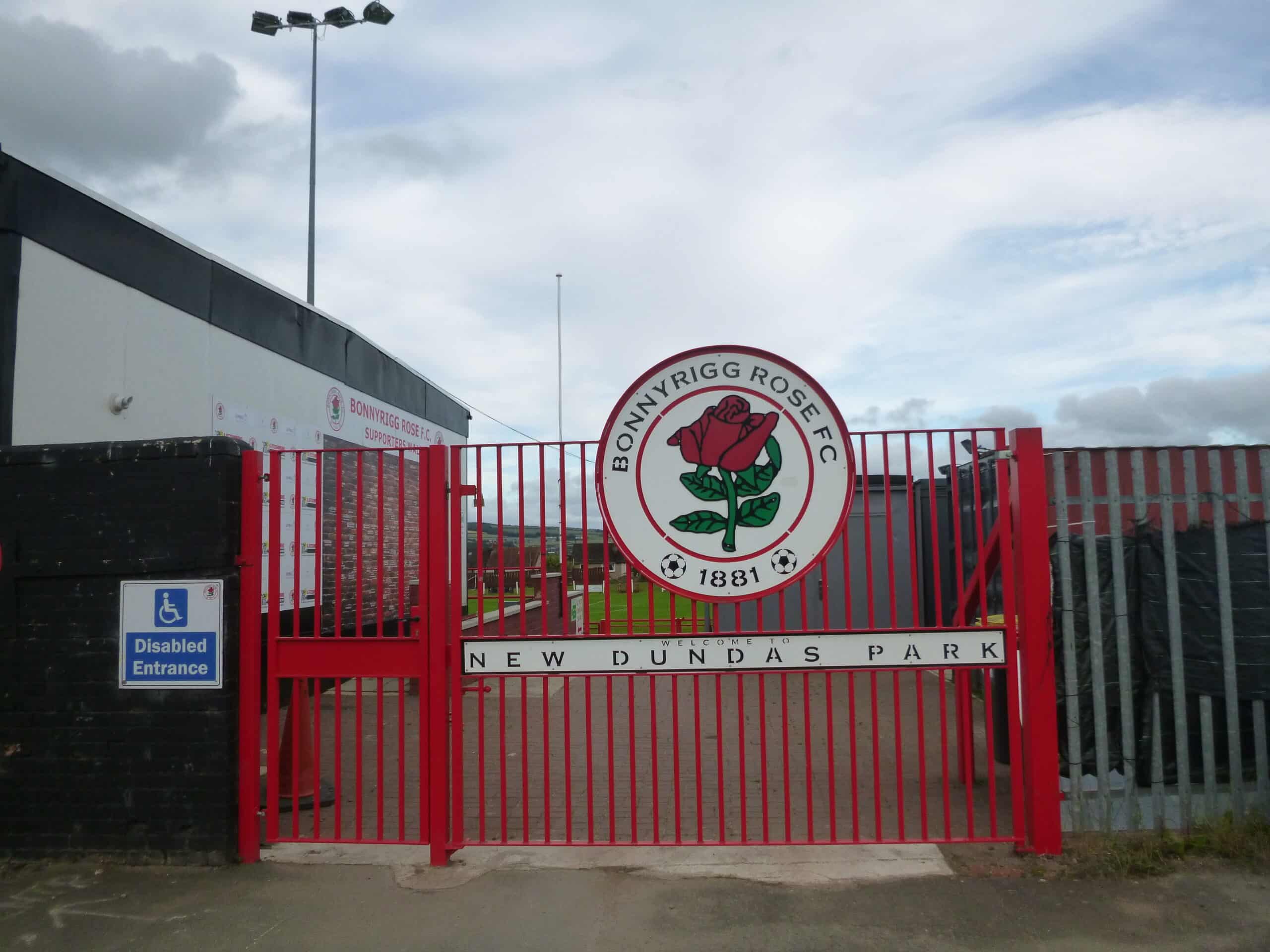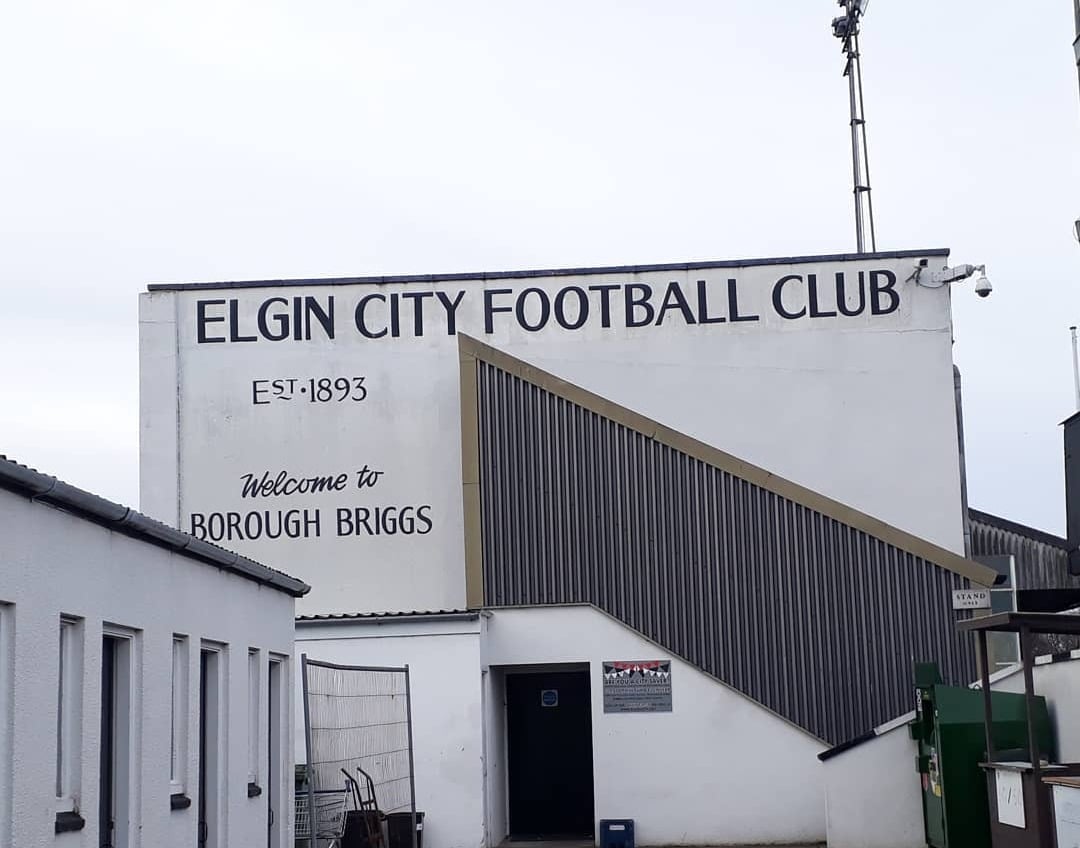The field of dreams – and the story behind it
Scotland’s national stadium, Hampden Park has sprung back into life thanks to four pulsating games at Euro 2020, ironically when attendances were limited to the low thousands due to the pandemic. While the entire nation was focused on Scotland’s comic defeat to the Czech Republic and brave but futile bow-out to Croatia, Hampden rediscovered its roar.
Although it has held well over 100,000 spectators, such as for the seminal European Cup final between Real Madrid and Eintracht Frankfurt in 1960, Hampden has a current capacity of 52,000. It should be full, packed solid, when the UK & Ireland host Euro 2028.
Built by the Queen’s Park club in 1903, Hampden is set in Mount Florida, south Glasgow, near the rail station of the same name. Until the early 2000s, these venerable tenants, then the last amateur side in the Scottish League, would attract a few hundred spectators to their domestic fixtures.
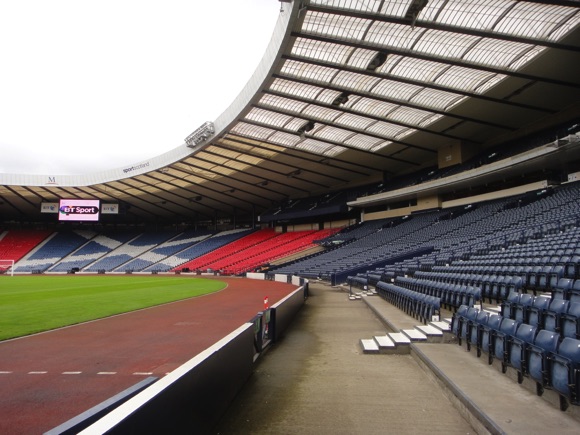
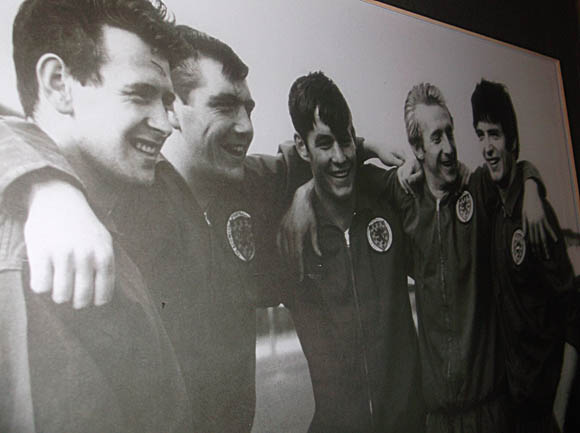

While Hampden was being revamped to host athletics for the 2014 Commonwealth Games, Queen’s Park played home games at Airdrie. With their lease due to expire in 2020, the club sold Hampden to the Scottish FA for £5 million, the money now being used to rebuild a Lesser Hampden alongside. Once unveiled at some point in the 2024-25 season as the City Stadium, this ground of around 1,800 capacity will better suit the club’s purposes.
As for the main arena, inevitably, Glaswegian engineer Archibald Leitch was the brains behind its construction. For half a century, Hampden Park, home of the then mighty Queen’s Park club – regular winners of the Scottish Cup in the late 1800s – was the world’s largest football ground.
Also venue for cup finals and internationals, Hampden staged many a fiery encounter between Scotland and England. One particular match, in April 1937, attracted 149,400 spectators – still the all-time record for any game in Europe. The famous Hampden Roar, a thundering, communal din, was said to be audible a mile away. It put the fear of God into any opposition, ideally those in England shirts.



It wasn’t just about noise or numbers: 130,000 might have been in attendance, but the European Cup Final staged here in 1960 is best known for being one of the finest displays of football ever seen, exhibited by Real Madrid in the last of their five consecutive European Cup wins, a 7-3 masterclass against Eintracht Frankfurt.
The 1970 European Cup semi-final between Celtic and Leeds drew 136,505, the all-time European record between clubs – but by then, Hampden was beginning to crumble.
It was still selected to host another major European final, in which Franz Beckenbauer Bayern held on to secure a 1-0 win over a graceful Saint-Étienne. The French team famously hit the square crossbar twice, the ball bouncing straight out each time. The fateful upright is now displayed in the club museum in Saint-Étienne, where the phrase Les Poteaux Carrés, the square crossbar, still echoes today. It’s even the name of a local restaurant.



The €4.5million refurbishment in the early 1980s had been long overdue, though reduced capacity to just over 74,000. The second phase of renovation, one which nearly bankrupted the Scottish FA headquartered here, was completed in time for the Scottish Cup Final of 1999. Real Madrid, in particular Zinedine Zidane, gave another memorable display of footballing brilliance here in the Champions League Final against Bayer Leverkusen in 2002.
By then, the Tartan Army who follow Scotland’s national team in large and loud numbers had gone from a pitch-invading horde to a more mature if still thirsty band who bring the party to the game. Comparisons with England’s followers became notably positive, partly because combustible fixtures between the two foes were no longer annual, but depended on the whims of qualification for major tournaments. Shortly before a fateful play-off here with England in November 1999, the Tartan Army had carried out notable charity work around a group game in Sarajevo.
Hampden, an Olympic 2012 football venue, hosted the Commonwealth Games of 2014, closing the ground to football until early 2015. The stadium found its voice again in September 2015 when a full house of 51,000 saw Scotland take on world champions Germany for a Euro 2016 qualifier.



For drama, however, little could beat Scotland overturning England’s 1-0 lead in June 2017 with two late free-kicks from Leigh Griffiths, only for Harry Kane to equalise on 93 minutes. A win would have been Scotland’s first over England since 1999 and salvaged hopes of reaching the World Cup finals in 2018. Instead, Scotland’s Tartan Army could add the Six Minutes of Insanity to its list of memorable moments.
Attendances dwindled after Scotland’s Euro 2020 qualifying campaign began with a 3-0 defeat in Kazakhstan. By the play-offs, with Europe deep in the pandemic, stadiums were closed but the dramatic penalty win over Serbia in Belgrade elevated the Scots to a first major finals since 1998.
For Scotland’s opener with the Czech Republic on a breezy June afternoon, Hampden was barely a fifth full due to pandemic restrictions but the significance of the moment was not lost on anyone. In the end, a stupendous lob from the halfway line by Patrik Schick sailed over David Marshall to settle the game and win Goal of the Tournament, its trajectory surely due for some kind of interactive installation in the excellent Scottish Football Museum in the South Stand.
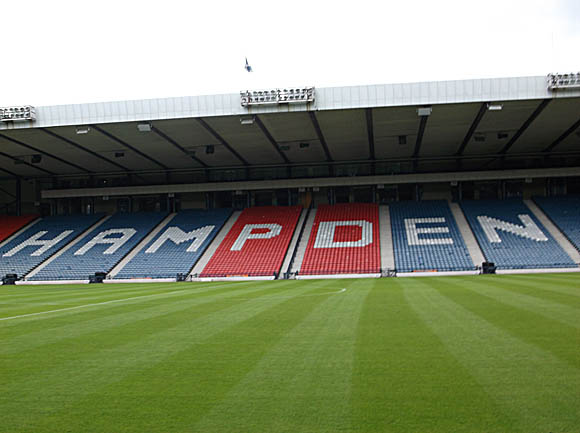
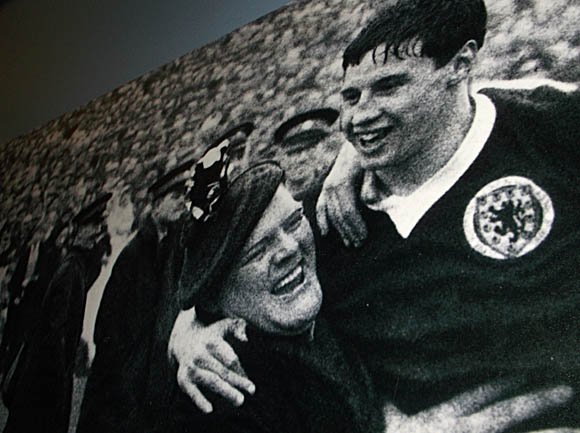
Then a spunky display from Steve Clarke’s men against England at Wembley and back at Hampden for the ultimately doomed game with Croatia at least put hope in Scottish hearts, and there was a full house here for the visit of Israel here in October 2021, a de facto decider for progress in 2022 World Cup qualification. In a ding-dong drama, the crowd willed in a 94th-minute winner, bundled in by Scott McTominay. Hampden released years of pent-up energy in one full voice. Fans were then rewarded with an impressive win here against Denmark which confirmed Scotland’s qualification for the World Cup play-offs.
Hampden is arranged in a bowl of two tiers, flattened out at either end. The Tartan Army occupy the North Stand, where standing is inevitable. Families don jimmy wigs and wave flags in the East Stand. Older followers enjoy the comfort of the sideline South Stand, with its suites and skyboxes. Its glass-fronted floors also contain the recommendable Scottish Football Museum. Visiting supporters are usually allocated sectors P5-P6 and A1 in the south-west corner, in full view of the Tartan Army in the North Stand.
Behind the goals, in the days when it was a given that they would meet in any final, Celtic were traditionally allocated the East Stand, Rangers the West.







getting here
Going to the stadium – tips and timings

The easiest way to reach Hampden is to take the frequent train from Glasgow Central to Mount Florida (£3/10min journey time). From there it’s a ten-minute walk up Bolton Drive/Somerville Drive.
The sat nav code for the car park behind the South Stand at Hampden Park is G44 4QG. This is free to use on non-match days, perhaps if you’re visiting the museum or taking the stadium tour. For games here, you must book parking through the Hampden website according to the fixture – cars are not allowed to park here otherwise.
Parking can also be arranged through the individual clubs involved on match days. There are few other options in the vicinity although some use Kings Park Avenue (G44 4JF), outside of the no-parking zone and a 15min walk from the stadium, turning right up Aikenhead Road.
getting in
Buying tickets – when, where, how and how much

The Scottish FA first sell tickets for full internationals to members of the Scotland Supporters Club (membership £50, over-65s £25, under-16s £10). As well as priority, members receive a £5 discount on each fixture if purchased in advance. Contact supporters@scottishfa.co.uk.
For major qualifying fixtures, availability is extremely limited once tickets go on general sale. Prices start at around £25 for a seat in the East or West Stand behind the goal. For women’s internationals, under-21 and junior games, tickets are usually sold on the day. For cup semi-finals and finals, supporters should source tickets through their own clubs.
what to buy
Shirts, kits, merchandise and gifts

At the Scottish Football Museum (see below), the Hampden Shop (Mon-Fri 9am-5pm, Sat 10am-5pm, Sun 11am-5pm) sells Scotland merchandise from yesteryear (notably 1967) and the modern day.
tours & Museum
Explore the stadium inside and out


Entertaining and affordable, a visit to the Scottish Football Museum can be combined with a stadium tour on certain days. For £13 (over-65s & under-16s £5) or £8 (discounts £3.50-£3) for tour (or museum) alone, visitors are taken round the historic arena, hearing the Hampden Roar down the tunnel before climbing the stairs to admire the Scottish Cup.
Dry-humoured tour guide David even goes into the history of the changing rooms, Celtic allocated the so-called unlucky East ones, having pitched up from the east end of town. You can also test your footballing prowess with the Hampden Hotshots game. The museum has a regularly changing exhibition agenda to complement the permanent one.




Among the souvenirs and assorted memorabilia, video films and posters, you’ll find a huge reconstruction of the famous slalom goal by Archie Gemmill against Holland at the 1978 World Cup. Look out, too, for an Iranian shirt from the same tournament.
There’s a section of fence from Hamilton Crescent, Partick, home of the West of Scotland Cricket Club, where the world’s first international football match took place, between Scotland and England in 1872. The latest exhibit, No Scotland No Party, celebrates Euro 2020.
All in all, there are 2,500 exhibits on display in 14 galleries. Tours currently take place three days a week, either Thur-Sat or Wed-Fri, at 11am, 12.30pm, 2pm and 3pm. The museum opens daily 10am-5pm. Book tickets here. The adjoining Hampden Café is also themed, with a tasteful history of the Scottish game covering the walls.
Where to Drink
Pre-match beers for fans and casual visitors




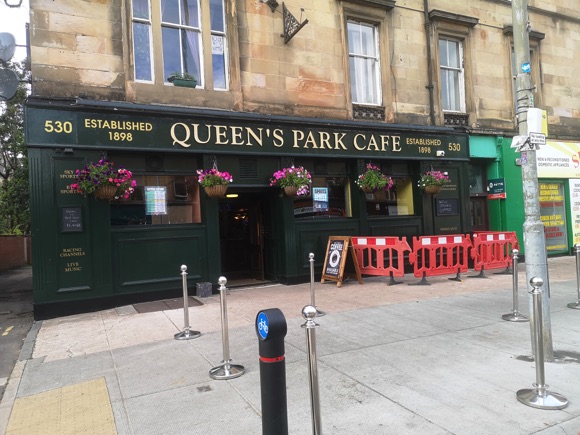

Many Scotland fans meet in pubs along Victoria Road, nearer to Queens Park station, such as the traditional Queen’s Park Café (No.530), in business since 1898, with a terrace and regular TV sport. Sadly, the nearby Hampden pub on Albert Road closed in 2021. Hopefully someone has made sure to keep all its memorabilia safe, including rare photos of Scotland line-ups.
At 708 Pollokshaws Road, all etched glass and shiny wood, 130-year-old Heraghty’s is preferred by Celtic fans before any big game, the nearby Regent (No.752) by those of the blue persuasion.








Within a short walk of Hampden, the estimable Clockwork Bar on Cathcart Road takes advantage of its location to welcome fans without colours. TV sports are broadcast, complementing a full menu and microbrewed beers.
Nearer still, the Florida Park (318 Battlefield Road) is a standard old local with karaoke the big attraction. On the other side of the stadium, where Aikenhead Road meets Curtis Avenue, The Montford serves its loyal regulars honest pints and decent pub grub. A beer garden operates in summer.
If it’s just chips you’re after, then behind the West Stand on Cathcart Road and Mount Annan Drive, Marini’s and Best Chippy Hampden can provide.



















